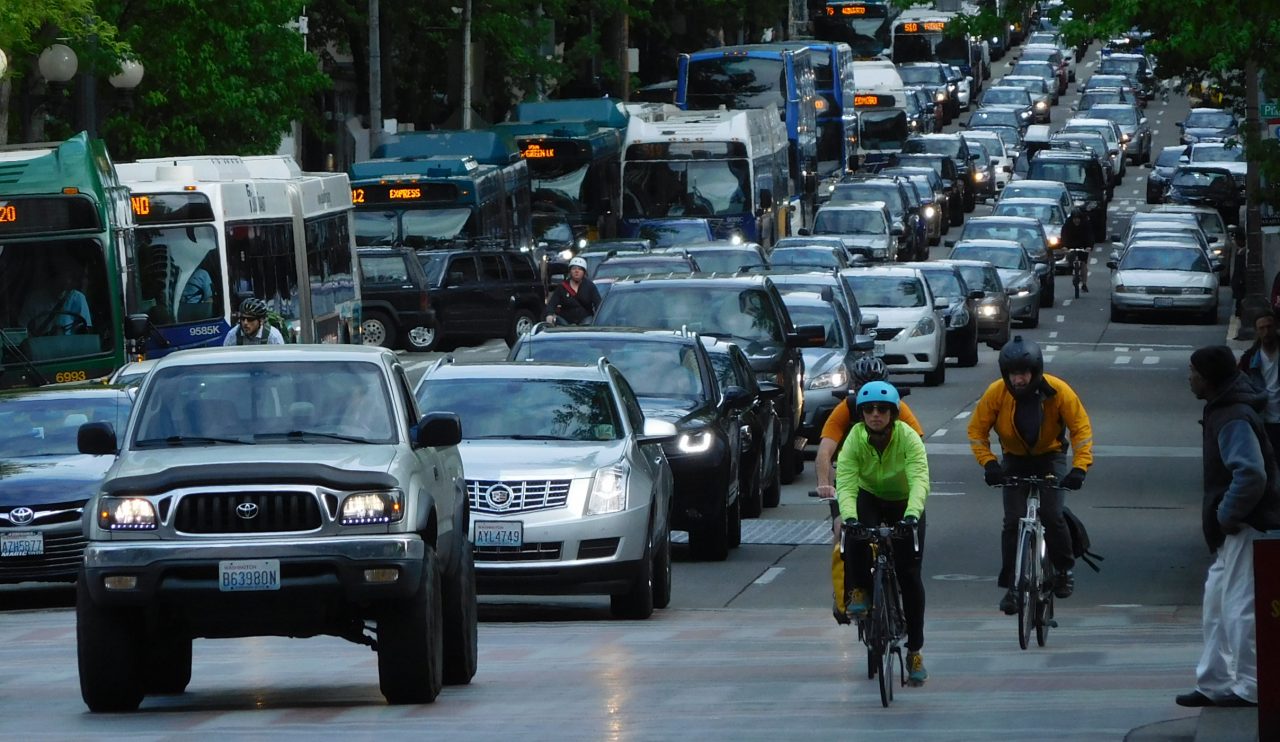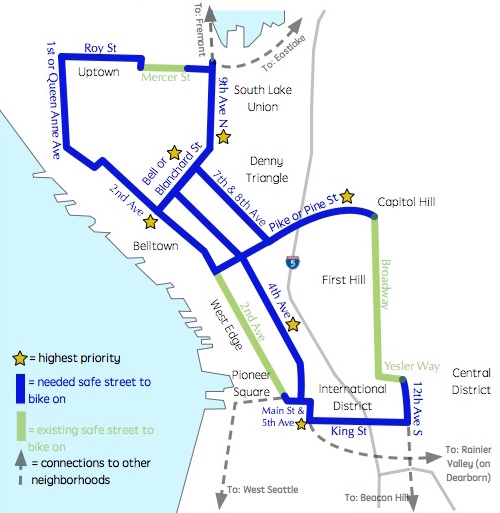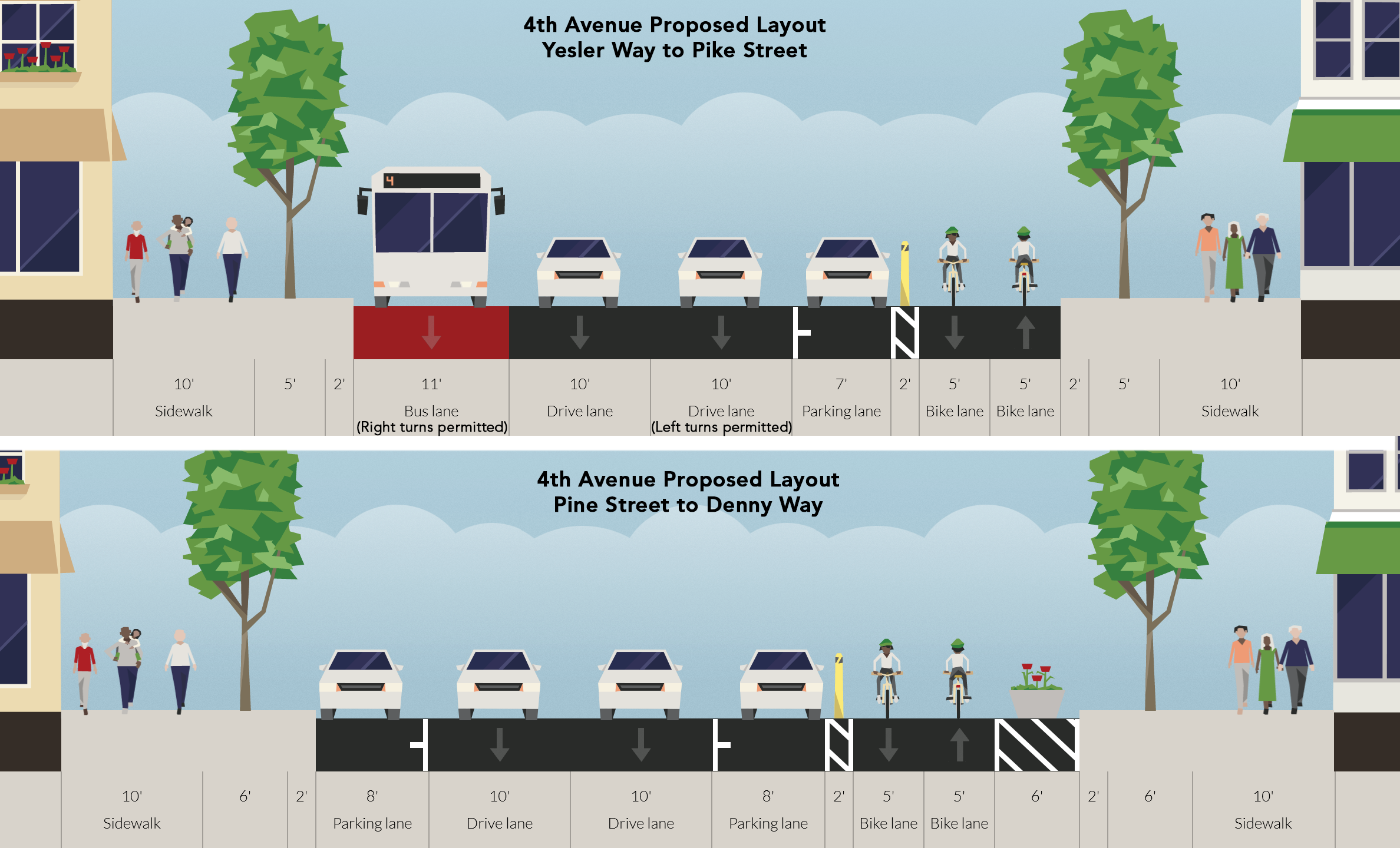
The Urbanist Editorial Board endorses the Basic Bike Network plan proposed by the Cascade Bicycle Club and Seattle Neighborhood Greenways, and championed by Seattle Bike Blog. We must build out a safe bike network as soon as possible. Advocates waited and waited as One Center City dealmaking delayed the Bike Master Plan, and we find the results of this extended stakeholder process lacking. Bicyclists deserve more decisive action, just as transit users deserve a bolder plan than truncating bus routes to clear space for single occupancy vehicles in Downtown Seattle.
The plan is modeled on Calgary‘s hugely successful basic bike network that rolled out simultaneously and doubled bicycle mode share in just three months. Other cities have seen big results when they take cohesive action on a large scale. Cascade Bicycle Club’s Kelsey Mesher touted Vancouver‘s success story just 230 kilometers to our north: “Building bike networks produces results. Since 2010, Vancouver has built out a downtown protected bike network with connections to surrounding neighborhoods. And in the past four years, the city has seen its mode share for bicycling double.” Chicago also has been rolling out its low-stress bike lane network quickly, with 50 miles striped in 2014 alone. Other cities have acted quickly and decisively while Seattle has vacillated and delayed, which has translated into real hardship for bicyclists and a higher collision rate than a safe network would engender.
Meanwhile, we are supposed to greet the killing of Seattle’s bike share program as a victory because the City expects to be able to extract $3 million from the burning wreckage of its e-bike dream. That money is supposed to help fund the Fourth Avenue protected bike lane that we already funded with the $930 million Move Seattle levy and to build some other Safe Routes to School that were already funded in the levy, too. That we are “expediting” those projects is good, but robbing Peter to pay Paul is not the kind of vision that advocates expected. Imagine if bike share had been launched with the Basic Bike Network in place? Perhaps we wouldn’t be wringing our hands about hills and rain and helmets? If a sufficient bike network had been in place at launch, maybe we would have a thriving bike share right now.
So that brings us to the Basic Bike Network. It’s not an all encompassing plan, but it would actually connect the few low-stress bike facilities we do have. Many more people would be able to say, ‘I can bike downtown safely.’

The facilities listed above are in various stages on planning. They’re in Bike Master Plan. We’ve written about them (see our Fourth Avenue coverage here and King Street coverage here). Other sites have written about them. We just need to get serious and efficient about implementing them. Many of the blue routes already have bike lanes; we just need to improve their design and add protection. Bollards or planters and striped intersections could suffice in a pinch. Basic protected lanes could be implemented relatively quickly.

The Basic Bike Network can be integrated into the One Center City plan so that the City’s comprehensive downtown transportation plan matches its mode share, climate change, and Vision Zero goals. One Center City as it stands now punts on those goals. We’d love to see the City demonstrate its commitment to Vision Zero and to bicyclists rather than kick the can down the road.
The Urbanist was founded in 2014 to examine and influence urban policies. We believe cities provide unique opportunities for addressing many of the most challenging social, environmental, and economic problems. We serve as a resource for promoting and disseminating ideas, creating community, increasing political participation, and improving the places we live.

